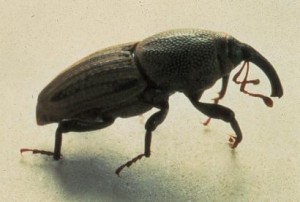Look South for billbug problems

Photo Courtesy of Utah Department of Agriculture and Food
“Go South, young man,” would have been Horace Greeley’s advice had he been an entomologist on a golf course looking for billbugs. This spring, superintendents need to look closely at sloped, South-facing areas when they scout for billbug populations.
“Areas to look at are the hilly, sloped areas like bunker surrounds, where the soil will dry out quickly,” advises Doug Richmond, head of the Turfgrass Entomology and Applied Ecology Lab at Purdue University. “South-facing areas are the hot spots.”
With the harsh drought last year, superintendents all across the Midwest got a brutal introduction to billbug damage. For many, the symptoms were unfamiliar. “Billbugs like hot, dry conditions,” Richmond says. “A lot of people miss it or misdiagnose it.”
Use the “tug test” to determine if you have billbug damage. Grab a couple of fingers full of brown and dead-looking tillers and pull straight up. If billbug damage is present, the tillers will break off easily at or just below the soil surface. Sometimes there will be very fine sawdust-like material at the bottom ends of the tillers.
Richmond also is concerned about over-wintered sod webworm. It often shows up most noticeably on greens and tees. “Look for the little caps they make out of the topdressing material,” Richmond says.
Across most of the Midwest, turf should come out of winter in better condition than it did in drought-ravaged 2012. Most areas had plenty of precipitation. Still, Richmond stops well short of declaring anyone home free.
“It’s been a ‘normal’ year so far,” he concedes. “But we need to see the grass come out of dormancy first. A warm snap at the end of March could well give us another strange year.”









